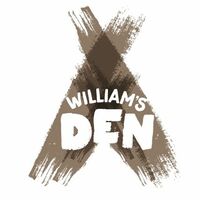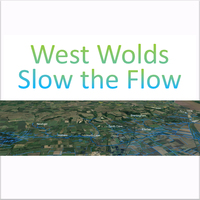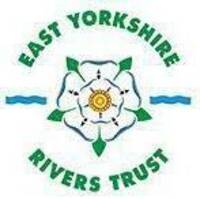Many thanks to the folks at
William's Den for facilitating this camera's location. This camera is capitally funded by
West Wolds Slow the Flow and
Hull University. The
Energy and Environment Institute was established at the University of Hull in late 2016, with the vision to be an internationally leading centre for research that focuses on global sustainability challenges. It brings together leading interdisciplinary academics to tackle global issues surrounding climate change and its consequences on livelihoods. The Institute has three primary goals: to research and discover; to innovate and deliver impact; and to act as a regional anchor and beacon for world leading research and knowledge exchange. Within our “Global change, risk and resilience” theme, Institute staff are deploying a number of sensor arrays that will enable near real-time high frequency monitoring of water quantity and quality in a range of settings, from the urban environment around the University campus
(https://www.hull.ac.uk/work-with-us/research/institutes/energy-and-environment-institute/our-work/sudslab-uk) and the towns of Doncaster, Immingham and Grimsby, to rural environments such as the River Hull catchment and the West Wolds catchment. The monitoring programmes will enable research and teaching in “living laboratories”, and are a pilot for wider initiatives and knowledge exchange with external collaborators. The Farson Digital camera at North Cave will be used for real-time flood and drought monitoring, allowing us to visually capture in-channel flood and drought dynamics, complementing the existing Environment Agency gauging network.” The civil parish of North Cave comprises the village of North Cave and the hamlet of Everthorpe. According to the 2011 UK census, the population of North Cave parish was recorded as 1,667, indicating a decrease from the figure reported in the 2001 UK census, which stood at 1,943. North Cave is situated within the Parliamentary constituency of Haltemprice and Howden, an area predominantly characterized by middle-class suburbs, towns, and villages. Notably affluent, this region boasts one of the highest proportions of owner-occupiers in the country.Historical records, such as Baines' History, Directory, and Gazetteer of the County of York, suggest that William the Conqueror granted the lordship of both North and South Cave to an individual named Jordayne, who subsequently adopted the surname 'Cave'. However, this anecdote lacks substantiating evidence in the Domesday Book, which does not list any landholder by the name of 'Jordayne'. The book does identify several lords and tenants-in-chief for both North and South Cave, with Robert Malet appearing as the primary landholder in 1086, alongside King William himself. Since William I passed away in 1087, leaving William II as his successor, it is plausible that some land transfers occurred after 1086. However, more evidence is required to validate the veracity of this family's origin story.In 1823, North Cave served as a civil parish within the Wapentake of Harthill and the Liberty of St Peter's. The Metham family of Metham had a residence in North Cave, which was later demolished. At that time, the village was home to both a Methodist and a Quaker chapel. The population stood at 783, and the occupations of the residents included seven farmers, two butchers, two corn millers, four shoemakers, five shopkeepers, two tailors, two wheelwrights, a blacksmith, a paper maker, a bricklayer, two surveyors (one for highways and the other for taxes), a schoolmaster, a gardener who also served as the parish clerk, and the landlords of The White Horse and Black Swan public houses. There were also three yeomen, a surgeon, a vicar, a gentleman, and two gentlewomen residing in the area. A carrier operated between the village and Hull twice a week, while a Hull to London coach passed through the village twice daily.The Metham family held the old North Cave Manor house and later constructed Hotham Hall as their new residence on the same estate. Sir George Montgomery Metham, the owner from 1763 to 1773, oversaw the landscaping of the grounds surrounding the North Cave manor house. The Hotham estate was subsequently sold to Robert Burton in 1773, who integrated the manor house grounds into those of Hotham Hall. The Metham family, however, retained ownership of North Cave Manor, which eventually passed down through inheritance to the Carver family, who continue to own the site to this day. Part of the property now functions as the Williams Den adventure playground.Notably, the Quaker preacher John Richardson was born in North Cave in 1667.







